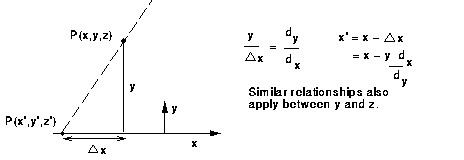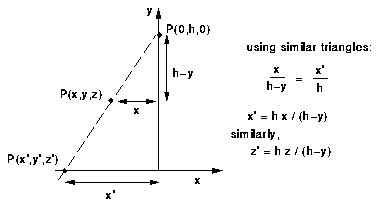Similarly, if the rule for updating a pixel is "update if the
new z is less than the old z", then primitive B will not overwrite
primitive A. Again, this changes if the order of the primitives is
changed.
-

Writing the above equations in matrix form gives:[ x' ] [ 1 -dx/dy 0 0 ] [ x ] [ y' ] = [ 0 0 0 0 ] [ y ] [ z' ] [ 0 -dz/dy 0 0 ] [ z ] [ 1 ] [ 0 0 0 1 ] [ 1 ]
-

Putting the above in matrix form gives:[ x' ] [ h 0 0 0 ] [ x ] [ y' ] = [ 0 0 0 0 ] [ y ] [ z' ] [ 0 0 h 0 ] [ z ] [ w' ] [ 0 -1 0 h ] [ 1 ]